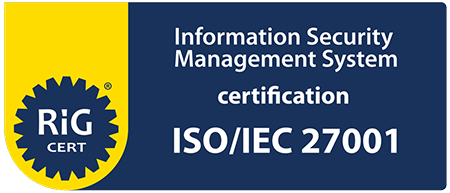The Power Distance Index (PDI) was first introduced in Hofstede’s Cultural Dimensions Theory and describes the power dynamics within social relationships in different cultures. Power distance has to do with how power is distributed within different hierarchies – family, school, at work, or at the state level.
Being aware of the PDI becomes crucial when managing people of different cultural backgrounds, but it’s also useful to keep it in mind when dealing with a monocultural team.
High Power Distance vs Low Power Distance Culture
Hofstede separates cultures into two main groups – those with high power distance and those with a low power distance.
High power distance cultures are characterized by large inequalities in the distribution of wealth and power, where subordinates are very unlikely to challenge authority figures directly. The leadership style is autocratic.
In low power distance cultures flat hierarchies are the norm. Workers in organizations with a low power distance index are usually treated more equally, managers consult their subordinates, and cooperation is highly valued.
Benefits and Challenges
Both groups have pros and cons. Leaders in high power distance environments can make decisions and quickly and decisively, which is crucial in crisis. High power distance cultures rely on clearly defined roles, which has been shown to lead to more job satisfaction and better work-life balance.
On the other hand, high PDI can easily create blind spots in management, as employees might not feel comfortable sharing even valid concerns, leading to mistakes that could’ve easily been avoided. Problems are likely to remain hidden and a culture of fear and intimidation can take hold.
Organizational models with a low PDI are favored in the West and are much more democratic. Knowledge and concerns are shared freely. Such organizations are also typically more flexible and quicker, and more willing to adopt innovations.
However, in low PDI cultures the lines between leaders and subordinates are blurred, creating opportunities for miscommunication and a mismatch between expectations and reality. Low hierarchies also rely more on individual responsibility and incentive, making it unclear who’s supposed to do what, turning cooperation into a challenge.
| High Power Distance Index | Low Power Distance Index | |
|---|---|---|
| Benefits | • Decentralization of decisions• More contribution from employees• “Open door” policy• Flatter organizational pyramid• Less pay inequality• General feeling of civility and mutual respect | • Decisions can made quickly and decisively • Clear division of labor and specialization• Sense of recognition of those in positions of power• Greater pay gap• Sense of order and stability |
| Challenges | • Lack of clearly defined roles and responsibilities • Coordination work is transferred to the individual instead of the manager • Less opportunity for advancement • More need for employees to self-advocate | • Culture of fear and distrust • Potential for lack of motivation and engagement in employees • “Top-down” decision making • Unequal distribution of power and resources • Lack of accountability • Corruption is common |
Hofstede’s Scale of Cultural Dimensions
Besides power distance, Hofstede identified several key dimensions within which cultural differences could be defined. This framework includes six main components:
| Dimension | Definition |
|---|---|
| Power Distance | Level of acceptance of power imbalance |
| Individualism vs Collectivism | To what extent are individuals expected to be self-reliant vs. relying on support from a group |
| Masculinity vs. Femininity | A culture’s preference for what are traditionally perceived as feminine (collaborative) or masculine (assertiveness) traits |
| Uncertainty Avoidance | Tolerance of uncertainty and ambiguity |
| Long vs Short-Term Orientation | Valuing of traditions and the past vs. being focused on the present and the future |
| Indulgence vs. Restraint | How different cultures act on their wants and needs – Do they feel free to satisfy their basic desires (valuing of personal control over life) or is giving into craving forbidden (conservative societies) |
Power Distance and Managing International Teams
Today, decentralized teams with mixed cultural backgrounds are becoming the norm which has its own challenges and advantages.
Here’s a few tips and best practices to help you and your employees navigate the cultural differences and collaborate more effectively:
Decision Making – Teammates with a more long-term orientation would be well-suited to deciding on the course of action. Employees with high uncertainty avoidance are more likely to make decisions based on strong facts and within clear parameters, which can help mitigate potential risks.
Communication – Daily or weekly standups to ensure everyone’s on the same page are particularly useful, making roles and responsibilities clearer.
Conflict Resolution – One-on-one discussions are the safest option, allowing everyone to save face. They’re also well-suited for conflict-avoidant teammates.
Positive Reinforcement – Consider which employees would be more motivated by a structured bonus system versus rewards such as promotions and extra days off given for specific accomplishments.
Role Allocation and Team Composition – Make sure roles and tasks are delegated appropriately. More individualistic employees will do better in roles that require self-initiative, while people with a high power distance background might appreciate working within a more structured hierarchy.
Knowing Your Team Is Key
A good team is made up of different personalities and has a diverse skillset. Navigating these differences comes down to being familiar with everyone’s strengths and quirks, so that every team member feels comfortable in their role and can put their best foot forward.
In a constantly shifting landscape, it’s important to always be aware of even seemingly small shifts within your team. The Employee Pulse Survey tool is the perfect solution to this challenge, as it allows you to easily stay up to date on what’s going on with your team.




